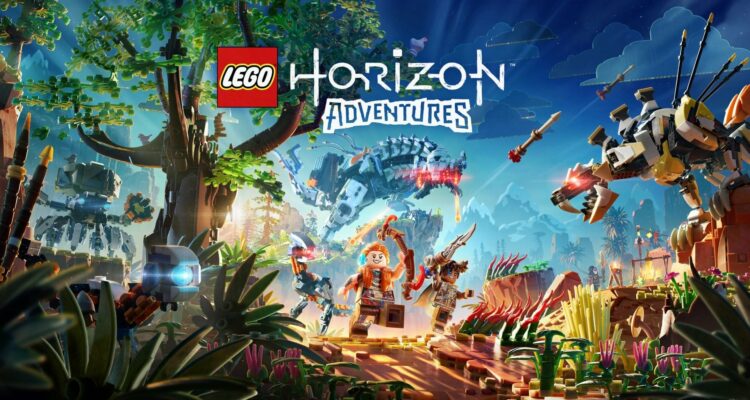As the Foo Fighters famously said, “I’ve got another confession to make.” That is the fact that I’ve never been much of a LEGO game fan. I’ve played most of them, and completed many, but I’ve enjoyed very little of my time with them. Only the odd one (such as LEGO Marvel Super Heroes, LEGO Jurassic World and LEGO City Undercover, the first time around) stands out as being relatively good, at least in my opinion. I understand that I’m in the minority, but it’s the truth.
The early and middle LEGO games were charming, but so repetitive that they were a chore to play. You’d enter a closed in area, break something, build something with the resulting pieces and then do that a million more times. They were too lacking in variety, and far too focused on basic and menial puzzles for me. Still, I ‘persevered’ through the majority of them, often as rentals or something I borrowed from the library.
When Sony announced LEGO Horizon Adventures, I was admittedly shocked like many others surely were, but also didn’t know how to feel. On one hand, I was interested in seeing how they would adapt a series I really enjoyed to LEGO and all ages formulas. Then, on the other, I was slightly dreading yet another of these games. They have been getting better, though, and I thought this one had a chance to be fun. Thankfully, it ended up being so.
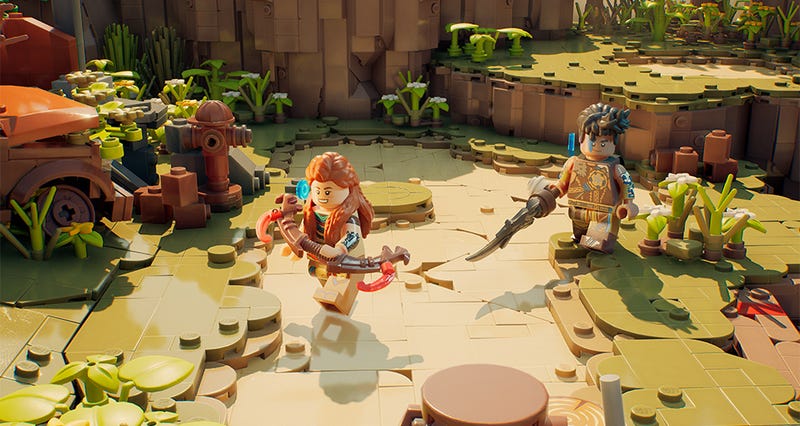
Originally released in 2017, for the PlayStation 4, Horizon: Zero Dawn tells the story of Aloy. Found in a strange contraption deep within a mountain, she’s cast out of the tribe that discovered her. Raised by a hardened man, she’s trained in the way of the warrior, and ends up proving herself worthy during a competition. However, the village of Mother’s Heart is attacked by a strange cult, forcing Aloy on a lengthy adventure that involves fighting humans and strange, animal like, robots from yesteryear. Using traps, guns, explosives and wits, she must take these beasts down and use their parts for her own purposes.
The game — which was recently remastered for PS5 — is also a story about a young woman finding herself, as she seeks knowledge about her mother and her general origins.
LEGO Horizon Adventures tells this story, but unsurprisingly doesn’t go into as much detail as its source material. Then again, that’s to be expected and isn’t a slight, given that it’s a game aimed at younger audiences while being accessible for all. These games have always simplified things and glossed over certain subjects, in favour of humour and charm. This is no different.
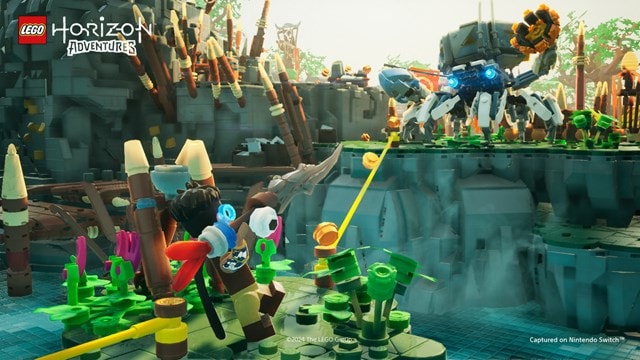
During your journey through a futuristic world made out of LEGO blocks, you’ll meet familiar faces from the original game. Some, like a recast Sylens who’s now a party DJ, will simply aid your adventure with words, information and tips. Others, like Varl and Erend, help make up the game’s roster of several playable characters. Each of these options has his or her own weapon type and play style, with Varl’s spears being my favourite. Aloy has a bow, and can pick up elemental variants (as can Varl for his spear), while Erend has a hammer and is the only close range combatant who offers true melee. Meanwhile, another playable heroine throws bombs, which didn’t interest me much.
Although I completed a stage as Erend, I spent most of my time playing as Varl, after unlocking him early on. His ranged combat abilities meshed with how I wanted to play, though I sometimes wished that he had a melee move. I also felt that this game severely lacked a roll mechanic, as it would’ve made moving around during combat encounters so much better. Only being able to run and jump left things feeling lacking, and made it harder to avoid certain attacks than rolling would have. Frankly, I was shocked that I couldn’t roll.
As you make your way through the different stages, which take place in several different environments, including a forest, a mountain range and sandy dunes, you’ll pick up gadgets. These go alongside your base and special ammunition, the latter of which is often elemental or homing. The gadgets on offer include a limited shield, a clone that will trick enemies, a drone, a brick thing you can slam downward, jet boots that allow for a fiery double jump and ice that can freeze foes of both types. My favourite, though, was a hot dog cart vendor who threw bombs.
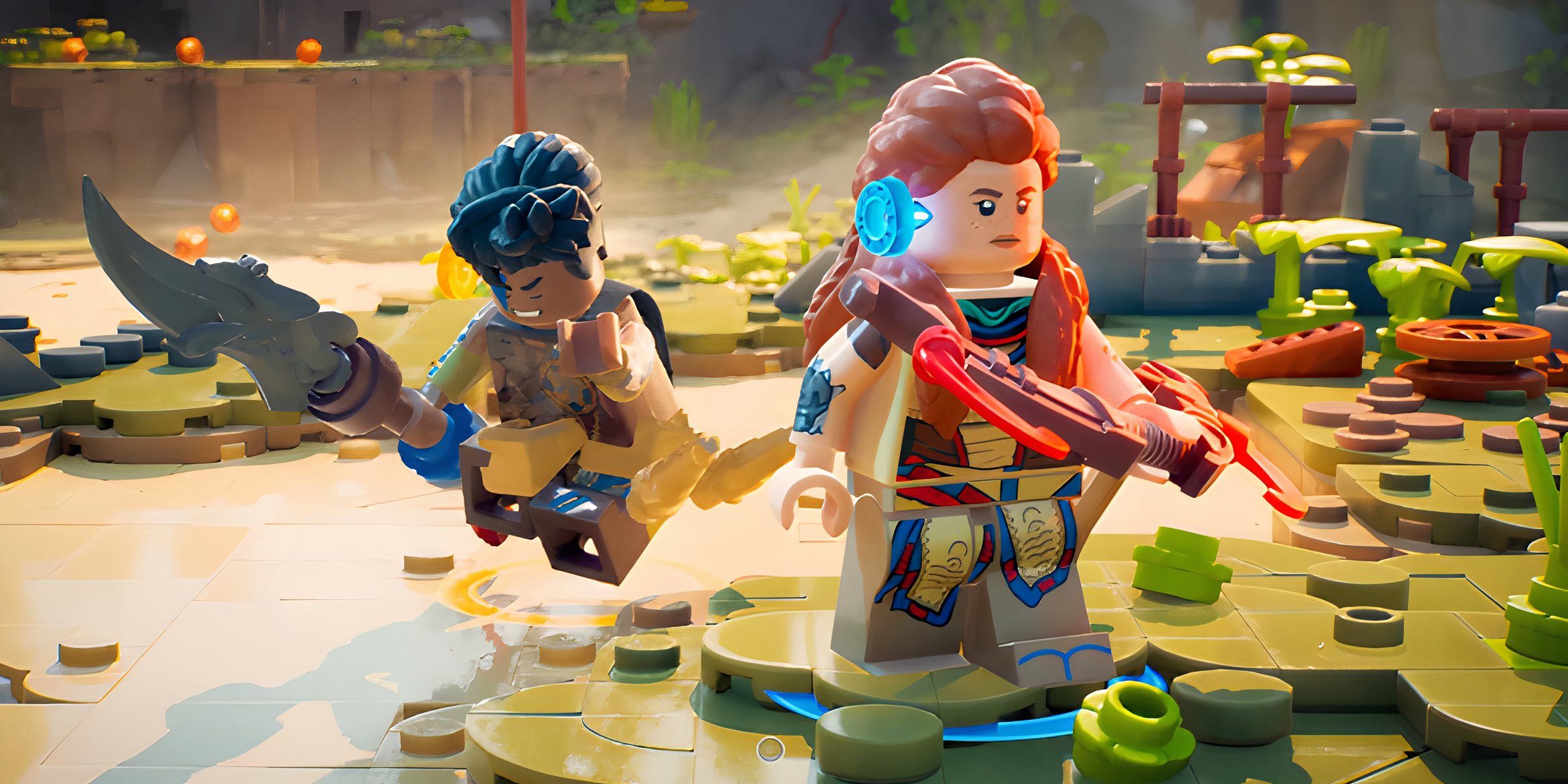
Sometimes having flaming spears or arrows comes in handy, as some leafy coverage can be burned away to reveal chests full of studs, which once again act as currency. It’s also possible to shoot an arrow or throw a spear through a campfire, to light it on fire en route. If the leafy blockade isn’t in plain sight of the fire, you can even set grass on fire and then shoot through it to light projectiles. That’s kind of neat, and can be helpful during combat, which is made a lot easier by using fire, electricity and frost.
Of course, the familiar weak spots mechanic is carried forth from the series’ debut. It’s possible to press a button to use your focus device, in order to scan machines and reveal their yellow coloured weak spots. Obviously, hitting them will do the most damage and drop these mechanical beasts fastest, but that’s not always possible. Sometimes things move too fast, or there are too many foes on screen, to worry about slowly picking at weak spots or holding the attack button to aim. Thankfully, the auto aim is really good.
Health can only be replenished by walking by trees with purple things hanging off of them. One won’t fully heal you from nearly dead, either, and they become more limited as the campaign goes on, so it’s always important to pay attention, jump out of the way of attacks and be smart. That said, there are several different difficulty options. I played on normal, and it wasn’t too challenging, but I did die.
Since each level is quite short, including the metallic cauldrons you’ll occasionally visit, checkpoints are few and far between. Sometimes, dying due to getting too cocky or coming up against a challenge will require you to restart that stage. However, if the stage you’re playing has different sections, you’ll start at the beginning of the section you’re on. Don’t expect much help from checkpoints though.

The stages found in LEGO Horizon Adventures are generally designed with the idea of some exploration followed by one or two combat scenarios in environments that could be called arenas. They’re usually pretty linear, but going off the beaten path will reward you with hidden chests. Two stages also offered branching paths, which let me choose between going after the nearby tallneck machine or a potentially easier path. Both led to the same conclusion, though: a golden brick at the end.
While I remember golden bricks being tough to obtain collectibles in earlier LEGO games, this one awards them for completing stages. You can unlock red bricks by going back to the different regions and defeating their several apex predators, of which I tackled three or four before calling it quits.
I do know that I didn’t collect all of the 50 golden bricks, but am not sure exactly how the others are earned.
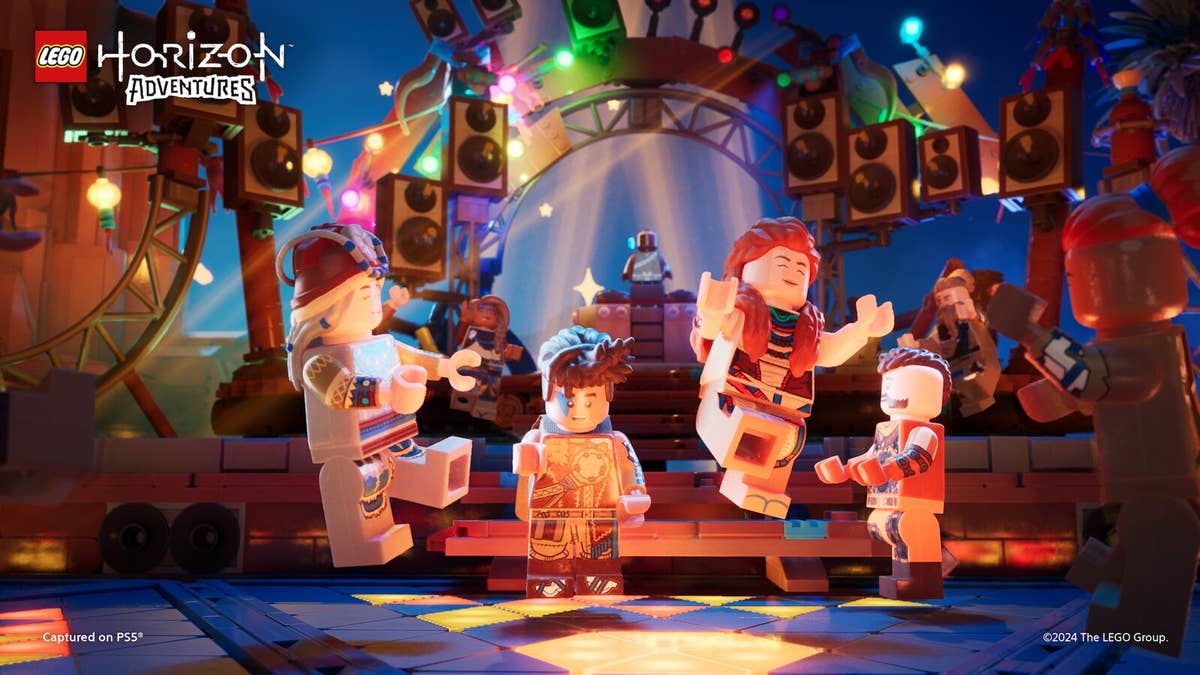
In fact, the entire experience feels more streamlined than many of its predecessors, and is less overwhelming as a result. Longtime fans of these titles may be disappointed by that, but I welcomed it. However, this did come with some caveats, including a short runtime, as the campaign is only six or seven hours long, or thereabouts.
There was also still repetition. While it didn’t come from an overabundance of tedious, forgettable and overused puzzles and building, it came from combat and stage design that didn’t change much from start to finish. This may well be my favourite LEGO game, but it’s definitely not perfect.
I also wasn’t terribly impressed by the fact that each of the different playable characters seemed to level up individually, instead of as a group. When I stopped using Aloy, she became left at level seven while the others were all ahead of that. My chosen hero, Varl, obviously ended up being much higher leveled than the series’ main heroine as a result of this system.
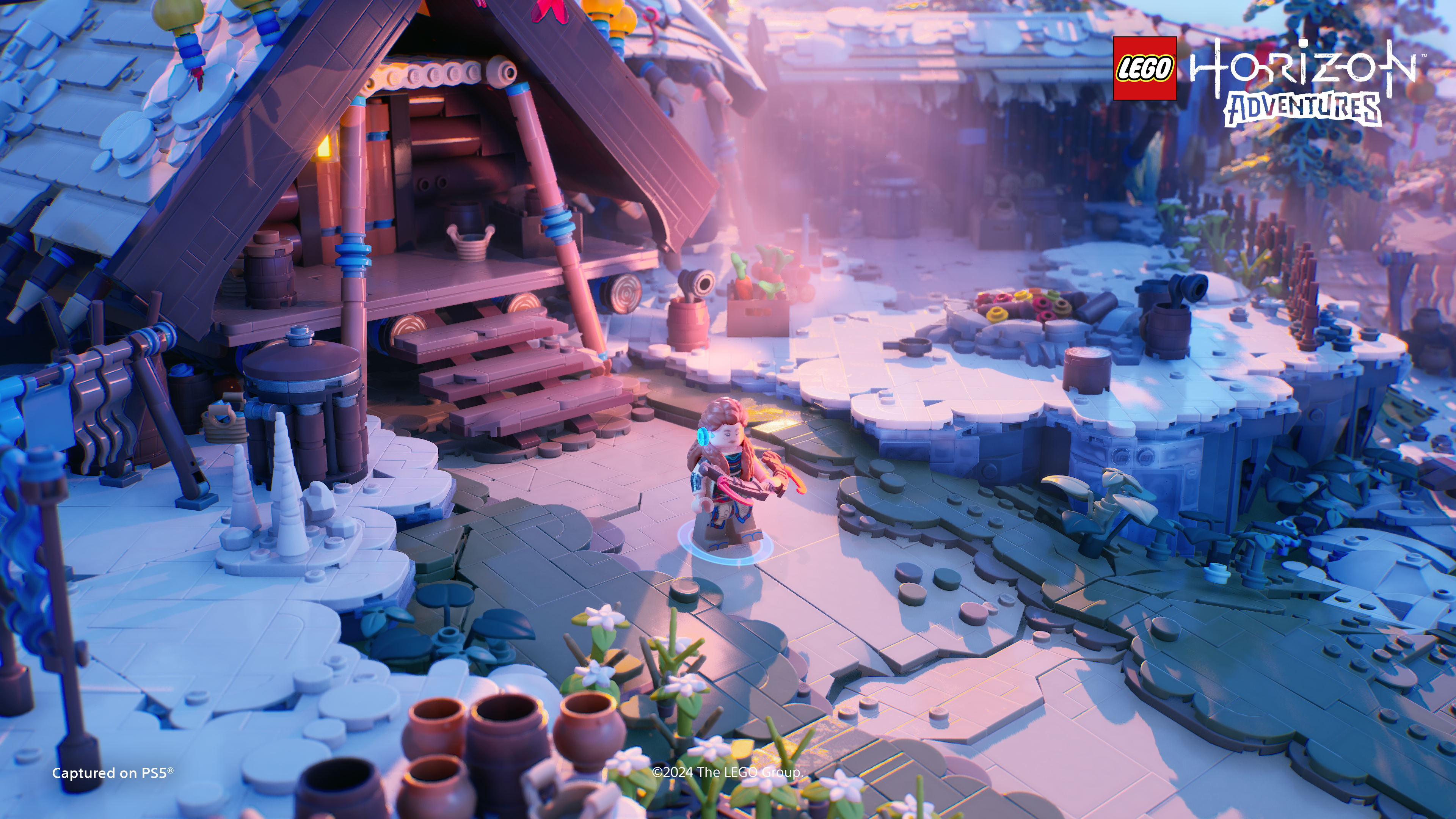
These heroes and heroines develop their own stats as they level up, but you can spend your collected studs to unlock certain shared buffs. One increases the experience points you earn as you play, while others increase the amount of time enemies are affected by elemental status effects, add to the damage that gadgets cause, and more. I didn’t unlock access to them all, as about half of them were hidden behind getting to 30 and higher.
Studs can also be spent on unlocking different costumes for each character, some of which are those of other NPCs and enemies from the series. Others are whimsical and real-life looks, like a bird, a policeman, a bee, a doctor and the like. Furthermore, one can unlock and use items or costumes from other LEGO properties.
The latter option extends past the costumes and customizable looks, to the statues and buildings in Mother’s Heart and the ground that they inhabit. You can create custom buildings, give them unique roofs (like popcorn), and paint them as you please. It’s also possible to place statues, traffic lights, trees and other items on many smaller plots. Some of the things you build will lend themselves to in-game challenges, like building a feasting table and eating there with your peers. You can even pick up and throw villagers, to make them interact with things. That didn’t interest me, but I tried it out once.
As you’ve likely gleamed from what I’ve written, the village is a hub where you can spend your downtime. You can customize it to your liking, and change things up provided you have the studs. Each of the regions containing stages are found at different edges of this hub. The village is pretty and large, but there’s not a lot to do within it.
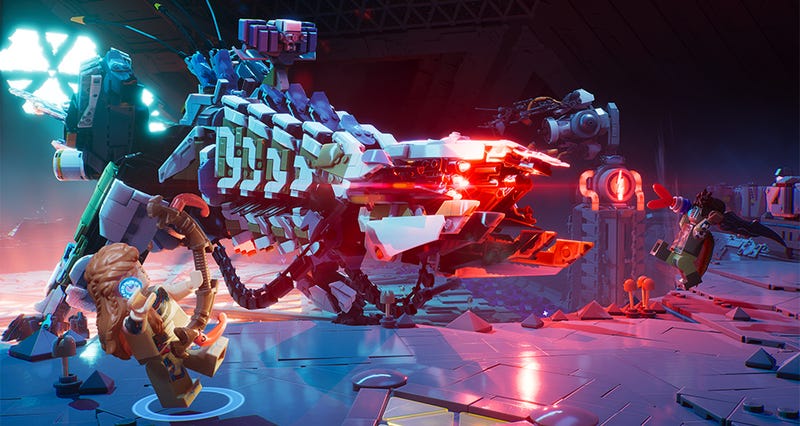
When LEGO Horizon Adventures was shown off, it looked beautiful. The final product is a game that is very easy on the eyes, thanks to high quality visuals, tons of sheen and shine, and a copious amount of colour. Although environments repeat quite a bit, they always look great. There’s no doubting that this is the best a LEGO game has ever looked.
I do, however, wish that you could opt to hide the ugly prompts that come up when you press a button to continue dialogue or skip a cutscene, which I didn’t do. It’s ugly, basic, text, which hurts the polished and pretty look of the game. I was able to hide the second player’s icon and co-op prompt, so that was at least something.
The sound and voice acting are also top notch, and won’t disappoint. The actors did a good job of lending themselves to the more campy nature of this spinoff, and it works. Sylens has obviously been recast due to actor Lance Reddick’s unfortunate death, and the replacement is solid. He’s definitely missed though.
At the end of the day, LEGO Horizon Adventures is a tough game to truly rate. On one hand, it’s probably the most enjoyable experience I’ve had with this block-based series. Then, on the other, it’s definitely more streamlined, lacks a good amount of additional content and has stages that feel repetitive in structure. The combat also gets repetitive, despite being the fastest, most fluid and most enjoyable in series history.
This is a solid game, but it could’ve offered more. I enjoyed my time with it more than anything TT developed, but can’t help but feel that it’s lacking variety and longevity.
This review is based on the PlayStation 5 version of the game, which we were provided with.

